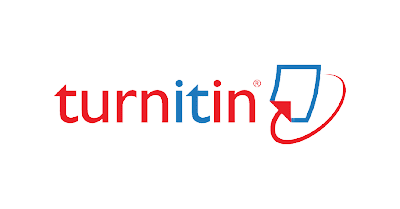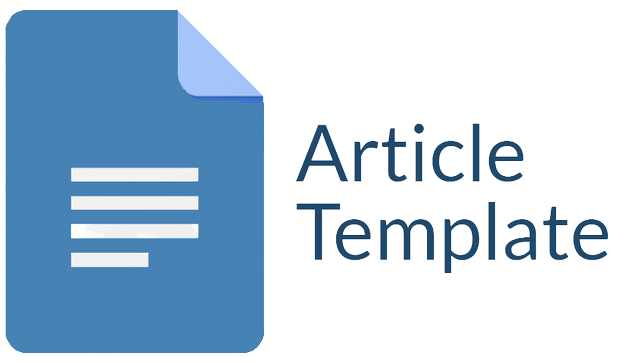WAWASAN STRATEGIS PENERAPAN KONSEP KOTA SPONS UNTUK PEMBANGUNAN PERKOTAAN BERKELANJUTAN
Abstract
Pertumbuhan penduduk yang pesat, urbanisasi, dan intensitas pembangunan infrastruktur yang tinggi telah menciptakan tantangan besar bagi keberlanjutan perkotaan, khususnya dalam hal pengelolaan sumber daya air. Salah satu pendekatan yang mulai diterapkan adalah konsep Sponge City, yang bertujuan untuk mengubah kota menjadi seperti spons yang mampu menyerap, menyimpan, serta mengelola air hujan secara efisien. Penelitian ini menggunakan metode studi literatur untuk mengevaluasi efektivitas penerapan konsep Sponge City di berbagai negara dan melihat faktor-faktor yang memengaruhi kesuksesan implementasinya. Hasil penelitian menunjukkan bahwa penerapan konsep ini di sejumlah kota masih belum berjalan secara optimal. Hambatan yang dihadapi tidak hanya disebabkan oleh infrastruktur yang belum memadai, tetapi juga karena kurangnya regulasi yang jelas, serta dokumen perencanaan yang belum terintegrasi dengan baik. Selain itu, penelitian ini juga mengungkap bahwa konsep Sponge City memerlukan biaya yang cukup tinggi dan implementasinya cukup kompleks. Kendati demikian, konsep ini dirancang untuk memitigasi risiko banjir secara efektif dan mendukung pengelolaan sumber daya air yang berkelanjutan di lingkungan perkotaan. Dengan penerapan yang tepat dan dukungan regulasi yang kuat, konsep ini dapat berkontribusi secara signifikan terhadap keberlanjutan perkotaan, meningkatkan daya tahan kota terhadap perubahan iklim, serta memastikan ketersediaan air yang memadai di masa depan.
Downloads
References
Aisenberg Ferenhof, H., & Fabiano Fernandes, R. (2016). DEMYSTIFYING THE LITERATURE REVIEW AS BASIS FOR SCIENTIFIC WRITING: SSF METHOD (Issue 3). https://www.researchgate.net/publication/325378194
Breed, C. A., Du Plessis, T., Engemann, K., Pauleit, S., & Pasgaard, M. (2023). Moving green infrastructure planning from theory to practice in sub-Saharan African cities requires collaborative operationalization. Urban Forestry & Urban Greening, 89, 128085. https://doi.org/10.1016/j.ufug.2023.128085
Fajrian, D. A. (2023). Studi Ketahanan Air Dengan Konsep Sponge City (Studi Kasus: Kelurahan Kidul Dalem, Kecamatan Klojen, Kota Malang). 12(0341).
Guan, X., Wang, J., & Xiao, F. (2021). Sponge city strategy and application of pavement materials in sponge city. In Journal of Cleaner Production (Vol. 303). Elsevier Ltd. https://doi.org/10.1016/j.jclepro.2021.127022
Han, J., Wang, C., Deng, S., & Lichtfouse, E. (2023). China’s sponge cities alleviate urban flooding and water shortage: a review. Environmental Chemistry Letters, 21(3), 1297–1314. https://doi.org/10.1007/s10311-022-01559-x
Israyanti, Uny, C., & Sriwulandari, M. (2024). DAMPAK PEMBANGUNAN KAWASAN INDUSTRI TERPADU TERHADAP DAYA DUKUNG DAN DAYA TAMPUNG LAHAN PERMUKIMAN (Studi Kasus: Kawasan Industri Terpadu Takalar). Edusaintek: Jurnal Pendidikan, Sains Dan Teknologi, 1969–1996.
Jia, H., Wang, Z., Zhen, X., Clar, M., & Yu, S. L. (2017). China’s sponge city construction: A discussion on technical approaches. Frontiers of Environmental Science & Engineering, 11(4), 18. https://doi.org/10.1007/s11783-017-0984-9
Jiang, Y., Zevenbergen, C., & Fu, D. (2017). Can “Sponge Cities” Mitigate China’s Increased Occurrences of Urban Flooding? Aquademia: Water, Environment and Technology, 1(1). https://doi.org/10.20897/awet.201703
Jin, M., Lancia, M., Tian, Y., Viaroli, S., Andrews, C., Liu, J., & Zheng, C. (2022). The Role of Aquifers in Sustaining the Sponge City Concept in Chinese High-Density Housing. Water (Switzerland), 14(6). https://doi.org/10.3390/w14060929
Lennon, M. (2015). Green infrastructure and planning policy: a critical assessment. Local Environment, 20(8), 957–980. https://doi.org/10.1080/13549839.2014.880411
Li, H., Ding, L., Ren, M., Li, C., & Wang, H. (2017a). Sponge City Construction in China: A Survey of the Challenges and Opportunities. Water, 9(9), 594. https://doi.org/10.3390/w9090594
Li, H., Ding, L., Ren, M., Li, C., & Wang, H. (2017b). Sponge city construction in China: A survey of the challenges and opportunities. Water (Switzerland), 9(9). https://doi.org/10.3390/w9090594
Liu, Y., Guo, X., & Hu, F. (2014). Cost-benefit analysis on green building energy efficiency technology application: A case in China. Energy and Buildings, 82, 37–46. https://doi.org/10.1016/j.enbuild.2014.07.008
Nguyen, T. T., Ngo, H. H., Guo, W., & Wang, X. C. (2020). A new model framework for sponge city implementation: Emerging challenges and future developments. Journal of Environmental Management, 253(October 2019), 109689. https://doi.org/10.1016/j.jenvman.2019.109689
Qiao, Z., Tian, G., Zhang, L., & Xu, X. (2014). Influences of Urban Expansion on Urban Heat Island in Beijing during 1989–2010. Advances in Meteorology, 2014, 1–11. https://doi.org/10.1155/2014/187169
Radjab, A. F. (2024). BULETIN INFORMASI IKLIM.
Remondi, F., Burlando, P., & Vollmer, D. (2016). Exploring the hydrological impact of increasing urbanisation on a tropical river catchment of the metropolitan Jakarta, Indonesia. Sustainable Cities and Society, 20, 210–221. https://doi.org/10.1016/j.scs.2015.10.001
Reu Junqueira, J., Serrao-Neumann, S., & White, I. (2022). Using green infrastructure as a social equity approach to reduce flood risks and address climate change impacts: A comparison of performance between cities and towns. Cities, 131(March 2021), 104051. https://doi.org/10.1016/j.cities.2022.104051
Rosyida, A., Aziz, M., Firmansyah, Y., Setiawan, T., Pangesti, K. P., & I., F. K. (2023). Data Bencana Indonesia 2023.
Shih, W. Y. (2022). Socio-ecological inequality in heat: The role of green infrastructure in a subtropical city context. Landscape and Urban Planning, 226(June), 104506. https://doi.org/10.1016/j.landurbplan.2022.104506
Sun, Y., Deng, L., Pan, S.-Y., Chiang, P.-C., Sable, S. S., & Shah, K. J. (2020). Integration of green and gray infrastructures for sponge city: Water and energy nexus. Water-Energy Nexus, 3, 29–40. https://doi.org/10.1016/j.wen.2020.03.003
Wang, H., Mei, C., Liu, J. H., & Shao, W. W. (2018). A new strategy for integrated urban water management in China: Sponge city. Science China Technological Sciences, 61(3), 317–329. https://doi.org/10.1007/s11431-017-9170-5
Wang, Y., Liu, Z., Wang, G., & Xue, W. (2021). Cellular automata based framework for evaluating mitigation strategies of sponge city. Science of the Total Environment, 796, 148991. https://doi.org/10.1016/j.scitotenv.2021.148991
Xu, Y.-S., Shen, S.-L., Lai, Y., & Zhou, A.-N. (2018). Design of sponge city: Lessons learnt from an ancient drainage system in Ganzhou, China. Journal of Hydrology, 563, 900–908. https://doi.org/10.1016/j.jhydrol.2018.06.075
Yang, D., Zhao, X., & Anderson, B. C. (2022). Integrating Sponge City Requirements into the Management of Urban Development Land: An Improved Methodology for Sponge City Implementation. Water (Switzerland), 14(7). https://doi.org/10.3390/w14071156
Zeng, C., Aboagye, E. M., Li, H., & Che, S. (2023a). Comments and recommendations on Sponge City — China’s solutions to prevent flooding risks. Heliyon, 9(1), e12745. https://doi.org/10.1016/j.heliyon.2022.e12745
Zeng, C., Aboagye, E. M., Li, H., & Che, S. (2023b). Comments and recommendations on Sponge City — China’s solutions to prevent flooding risks. Heliyon, 9(1), e12745. https://doi.org/10.1016/j.heliyon.2022.e12745
Zuniga-Teran, A. A., Gerlak, A. K., Mayer, B., Evans, T. P., & Lansey, K. E. (2020). Urban resilience and green infrastructure systems: towards a multidimensional evaluation. Current Opinion in Environmental Sustainability, 44, 42–47. https://doi.org/10.1016/j.cosust.2020.05.001
Copyright (c) 2025 Indah Rahmahdini, Muhammad Yusuf Fauzan, Bagaskara Budiprasetya

This work is licensed under a Creative Commons Attribution-ShareAlike 4.0 International License.
Jurnal allows anyone to compose, correct, and do derivative works, even for commercial purposes, as long as they credit for the original work. This license is the freest. It is recommended for maximum distribution and use of licensed material.
The submitted paper is assumed not to contain any proprietary materials that are not protected by patent rights or patent applications; The responsibility for technical content and protection of proprietary materials rests with the authors and their organizations and not the responsibility of journal or its editorial staff. The primary (first/appropriate) author is responsible for ensuring that the article has been viewed and approved by all other authors. The author's responsibility is to obtain all necessary copyright waivers to use any copyrighted material in the manuscript before submission.
Jurnal Pendidikan, Sains dan Teknologi allows the author(s) to hold the copyright without restrictions and allow the author(s) to retain publishing rights without restrictions. Jurnal Pendidikan, Sains dan Teknologi CC-BY-SA or an equivalent license as the optimal license for the publication, distribution, use, and reuse of scholarly work. Jurnal Pendidikan, Sains dan Teknologi allows the author(s) to hold the copyright without restrictions and allow the author(s) to retain publishing rights without restrictions. Jurnal Pendidikan, Sains dan Teknologi CC-BY-SA or an equivalent license as the optimal license for the publication, distribution, use, and reuse of scholarly work.
In developing strategy and setting priorities Jurnal Pendidikan, Sains dan Teknologi recognize that free access is better than priced access, libre access is better than free access, and libre under CC-BY-SA or the equivalent is better than libre under more restrictive open licenses. We should achieve what we can when we can. We should not delay achieving free in order to achieve libre, and we should not stop with free when we can achieve libre.
Jurnal Pendidikan, Sains dan Teknologi is licensed under a Creative Commons Attribution-ShareAlike 4.0 International License.
You are free to:
- Share a copy and redistribute the material in any medium or format
- Adapt a remix, transform, and build upon the material for any purpose, even commercially.
- The licensor cannot revoke these freedoms as long as you follow the license terms.






